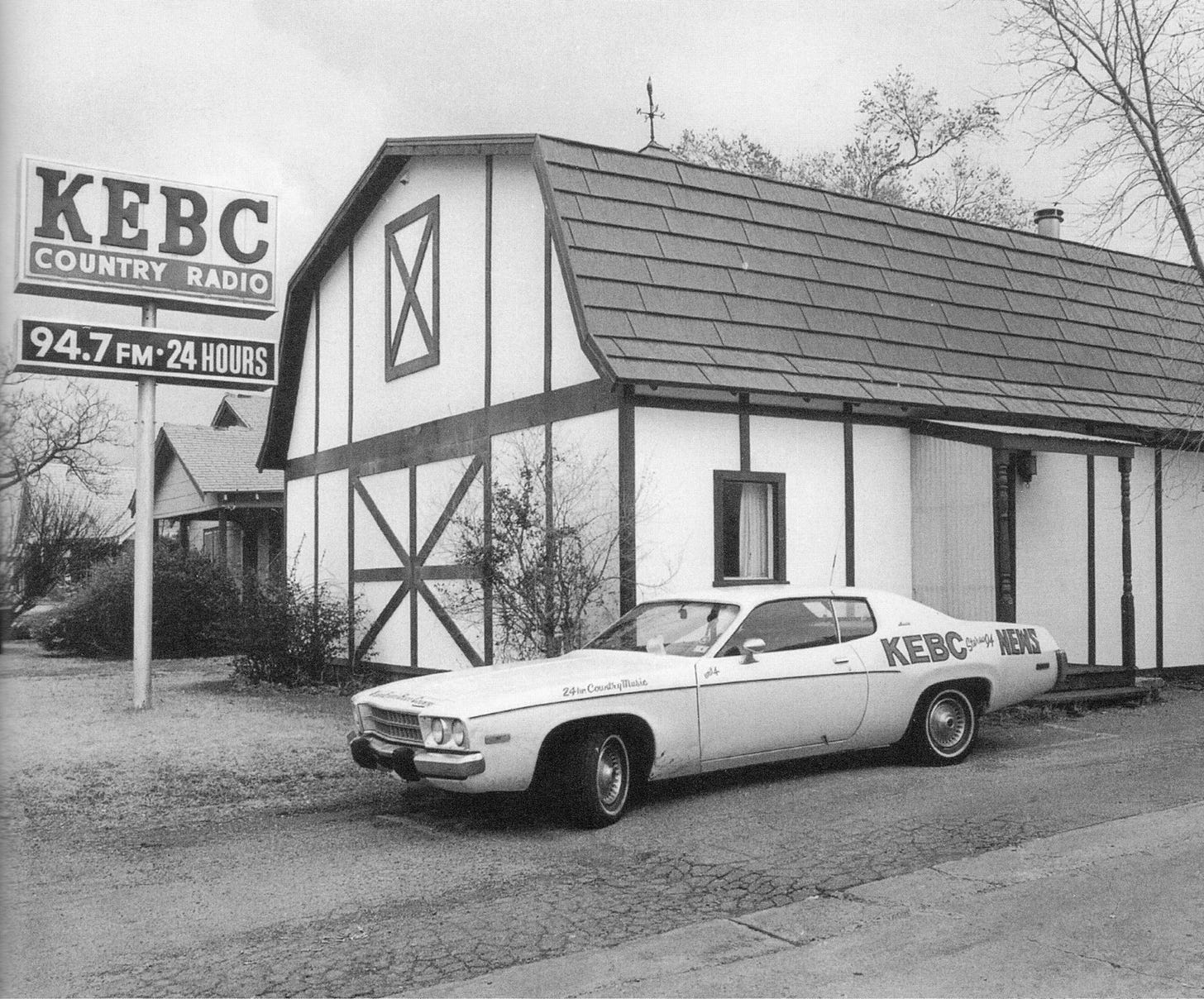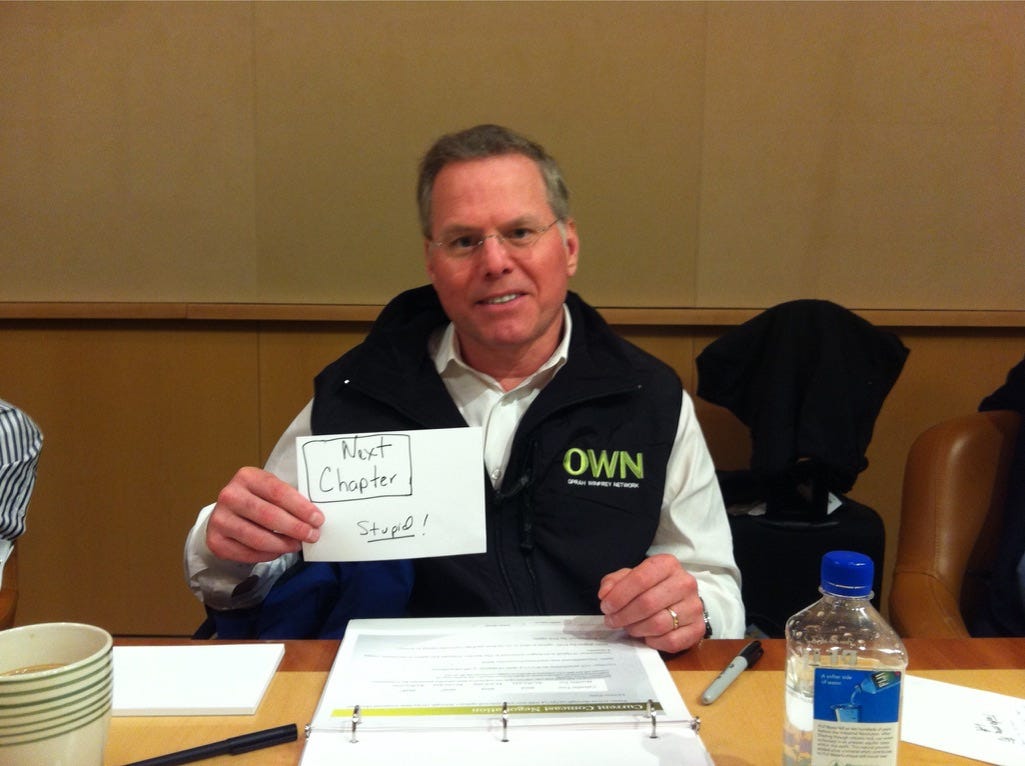Why Focus Is the Last Competitive Advantage
Signal > Noise.
I grew up in a time in business where the mantra was working around the clock, sleeping in your office, and always being on call. It was a badge of honor. Working nonstop, especially in my youth, was a survival skill and a way I could keep my impostor syndrome at bay.
But today, in a world fraught with distractions from every angle, and with the looming fear of AI taking over almost everything, one thing I’ve had to lean on, and you can too, is one word: FOCUS.
This reminder came back to me when I was listening to Kevin O’Leary, someone people have a wide range of opinions about, talking about his interactions with Steve Jobs. As “Mr. Wonderful” put it, Steve had a great way of talking about focus, and how he looked at it: the signal-to-noise ratio.
It sounds like a tech thing (and it is, technically), but what it means in practice is simple: How much of what you do matters?
And how much is just… noise?
It’s said that Steve Jobs was obsessed with this concept. On the Diary of a CEO podcast, O’Leary recalled Jobs demanding an 80/20 signal-to-noise ratio: 80% of the work had to be signal (actual impact), and only
20% could be noise (meetings, BS, ego). As Kevin explained it, Steve would focus on no more than three, at most four, things that must get done in the next 18 hours (his “awake time”) to move the company forward. That was his signal.
I can’t say for sure whether Jobs ever said it that way. I’ve read Walter Isaacson’s book, sat through the keynotes, and heard enough “Steve Stories” from friends at Apple to last a lifetime, but I’d never heard this before. Still, it rings true. And here’s what I do know: the principle is dead-on. And most of us are terrible at living by it.
I’ve been inside companies, big, small, on fire, and just meandering along, that were paralyzed by noise. People were busy, sure. But busy is not the same as focused. Nine times out of ten, the operational problems could be traced to being buried in noise.
The bigger the org, the louder the noise.
Consider this: you start every day with a calendar full of “alignment” calls. You get buried in email threads with more people CC’d than there are in a high school graduating class. Everyone’s spinning, pushing, sprinting, but no one can tell you what matters this week. Or why. Or what the hell are you all trying to solve? (Delete “Reply All” from your vocabulary, please.)
Many people confuse busy work with progress. But you can be walking or running and still going nowhere. That’s called a treadmill.
I say this with all humility because I’ve made the same mistake. Early in my leadership career, I wore “busyness” like a badge of honor. Every 7 AM call. Every 10 PM Slack. Every unread email. I thought that looked like leadership. It wasn’t, it was noise dressed up as importance.
The cost? Focus. Energy. Creativity. Culture.
Burnout isn’t just about overwork—it’s about doing 100 things and not knowing which one actually matters. Everything can’t be equally important.
Where it got real for me
When I joined OWN during the post-Oprah transition, when the network was trying to find its identity, there wasn’t room for fluff. As the new leadership team, we had to move fast. We didn’t have the luxury of noise. If something didn’t drive the mission forward, we cut it.
I remember sitting in a meeting and literally asking, “Why are we talking about this? Who is this for? What problem are we solving?”
We made clarity a religion.
Rules for keeping the ratio in check
1. Limit to Three
Three priorities. That’s it. Not five. Not twelve. Three. This is the Jobs signal approach. In your next 18 waking hours, what are the three things that must get done to move your company forward?
When someone brings me a new idea or initiative, the first question I ask is: “Does it replace one of the three? Or does it dilute them?”
If it dilutes? Pass.
If the call or email isn’t aligned, I brush it off until I get to the list. The downside? I’m not getting back to some pedestrian emails. The upside? We’re moving the company forward by focusing on the big things. And I have to trust the teams we’ve built to handle the small things like ticket requests or fixing the AC.
2. Kill the Zombie Projects
Zombies are monsters, and to you and me, they’re noise monsters. These are the projects you’re still pretending are alive but haven’t moved in weeks. Months. Maybe years. Someone keeps saying, “We’re almost there!” But you’re not. You know it.
Here’s what you do: pull the plug. Free your people. Free yourself. If it’s really important, it will find its way back onto your top-three list.
3. Say No Out Loud
Saying no in your head doesn’t work. You’ve got to say it out loud, in front of people, and mean it. It gets easier, and more addictive, because you start to feel what it’s like to protect your time, your team, your focus.
Here’s a truth I had to learn the hard way: your team doesn’t need more from you. They need clarity.
Growing up in Oklahoma, my mom had a lot of what she called “frontier logic.” she loved to pass along to me without my solicitation. She used to say no to me all the time, and when I talked back, which was often, she’d say, “Erik, no is a complete sentence.”
Try that on your teams.
4. Audit Your Time Like It Owes You Rent
Look at your calendar. Every meeting, every call, every block. Ask one brutal question: “If I didn’t do this, what would break?”
If the answer is “nothing”? Cancel it. Go back to your signal list. You’d be REALLY surprised what doesn’t break if your not there. I have personally made the mistake of telling myself and my ego, if I’m not in the meeting, session or call, it will slow down progress. It’s not that true usually.
However if it IS true, you have a people problem that should now immediately move to the Signal list and fix that!
5. Carve Out Thinking Time
This one’s personal. I used to pride myself on never stopping. But over time, I realized: I wasn’t leading, I was reacting. And reaction is the playground of noise.
Now, I build in “white space.” Walks. Notebooks. Surfing. Time to sit with the problem and think it through. Clarity doesn’t show up when you’re sprinting; it shows up in the stillness.
I don’t care what you do, run a company, build a brand, write code, or coach a team. Whatever it is, your greatest threat isn’t failure.
It’s a distraction.
Tune In The Signal Now

The longer I do this work—building things, turning things around, trying (and often failing) to lead with intention—the more I believe that signal beats scale—every time. You don’t need more inputs. You need to listen for the right ones. You need to find a few things worth doing and do them.
Jobs may not have said “signal-to-noise ratio” on stage at Apple. But his entire career was about subtraction. Ruthless editing. Simple truth. And relentless focus.
So the question isn’t whether he said it.
The question is—do you live it?
Do I? Not always. But I’m working on it.
Because the older I get, the more I crave the signal—the real work, the stuff that moves people, moves companies, moves the soul. And the less tolerance I have for the noise.
Time to clear the static.





we were just talking about signal vs noise last night. love this elo.
Great article. “It can’t all be important,” so true, and, it so often feels like it all is.
“Clarity comes from stillness.” 💫